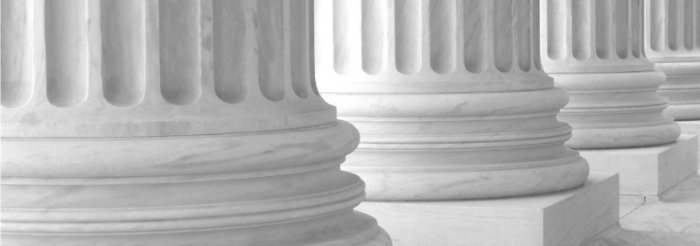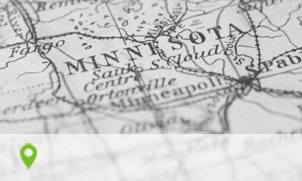Frequently Asked Questions
The Municipal Boundary Adjustment Unit (MBAU) of the Court of Administrative Hearings (CAH) adjudicates all municipal boundary adjustment matters in Minnesota. These answers to frequently asked questions provide answers to common boundary adjustment questions received by CAH, but do not constitute legal advice. If you have questions about a specific legal issue, you may wish to consult an attorney. If you have questions for CAH, such as information about forms or past cases, you can email MBAU staff at mbauadministrator.oah@state.mn.us.
Where can I find the statutes and rules that apply to boundary adjustments?
Minnesota Statutes Chapter 414 governs all boundary adjustments. Minnesota Rules chapter 6000 contains the procedural rules for boundary adjustment proceedings.
Where can I find information about past or pending boundary adjustment cases and filings?
MBAU maintains a database of boundary adjustments in its Boundary Adjustment Reporting System (BARS). BARS includes docket listings beginning in 1959 through the present. From 1959 to the early 1980s, the listings include only basic information, but dockets originating after that contain scanned case documents such as the initiating document and final decision. Under CAH’s retention schedule, most physical files are transferred to the Minnesota History Center three years after a final decision on the boundary adjustment is issued. MBAU files stored at the History Center may be viewed at the Gale Family Library.
Where can I find sample petitions and forms?
Sample forms, including petitions, are available on the Forms page. Please keep in mind that the forms listed do not represent all types of boundary adjustments. Please contact MBAU staff at mbauadministrator.oah@state.mn.us if you would like examples of actual filings for a certain type of boundary adjustment.
What is needed to make a boundary adjustment filing complete?
The filing requirements vary for each type of boundary adjustment. At a minimum, every filing must include an initiating document (petition, ordinance, notice of intent, or resolution), a complete and accurate legal description, maps, and a filing fee.
What maps are required?
For a filing to be complete, several maps are required under Minnesota Statutes sections 414.012, subds. 1-2; 414.011, subds. 9-10; and Minnesota Rule 6000.0800, subp. C. A filing must include:
- A map that highlights the boundary adjustment area; shows details of the proposed boundary adjustment area; and highlights the current city limits.
- The map must show identifying markers, such as the county name, section number, and township and range numbers.
- An aerial view without identifying information is not sufficient.
- Survey maps are acceptable as a detail map, but the maps must highlight ONLY the area proposed for the boundary adjustment.
- A map clearly showing the entire city boundary, with the boundary adjustment area marked or highlighted.
- If the boundary adjustment area is platted, a copy of the complete plat map.
What type of legal descriptions are accepted?
All legal descriptions must be complete and accurate and must describe only the area proposed for the boundary adjustment. Descriptions often come from deeds, surveys, etc. Legal descriptions from property tax statements are not accepted because these descriptions are abbreviated and usually not recordable. If the legal description references any documents or maps, the filing party must provide copies of those documents or maps for a filing to be considered complete.
What are the filing fees for a boundary adjustment?
No petition will be acted upon until a filing fee is received. Filing fees, as provided by, Minnesota Rules part 6000.3400, can be found on the Filing Fees page. The filing fee should be paid by a check payable to the Court of Administrative Hearings and mailed to the MBAU Administrator at the Court of Administrative Hearings, Attn: MBAU Administrator, PO Box 64620, St. Paul, MN 55164-0620. OAH does not accept filing fees electronically.
When will I know if boundary adjustment documents have been received?
Whenever possible, MBAU staff reviews documents for compliance with the statute within two business days of receipt. MBAU staff will notify the filing party that documents are received. You can also check BARS. All pending dockets are listed in BARS after a file is opened and a docket number assigned.
How long does it take for an order to be issued on a boundary adjustment?
The time for issuing an order depends on the type of boundary adjustment, the required procedure, and any issues presented in the filing. For boundary adjustments that do not require a hearing before an administrative law judge, an order could be issued as soon as the filing is complete AND the legal description and map have been deemed accurate. For dockets that require a hearing, an order is typically issued within a several months of the close of the hearing record. Minnesota Statutes sections 414.07, subd. 1; 414.09, subd. 1, require that an order be issued within one year of the date of the first hearing. If hearings or other proceedings must be held regarding a boundary adjustment, MBAU staff will contact the parties.
When will I know the outcome of a boundary adjustment?
Pending dockets are listed on the BARS database. BARS provides pertinent information on each docket. Pending dockets are removed from the list of pending matters after an order is issued. You can search BARS using the docket number of the matter you wish to review. Enter the docket number and search for “Any” rather than “Pending” to view the case and any uploaded documents.
Where can I get a copy of an orderly annexation agreement between a city and township?
Orderly annexation joint agreements are posted on the Orderly Annexation Main Agreements page.


